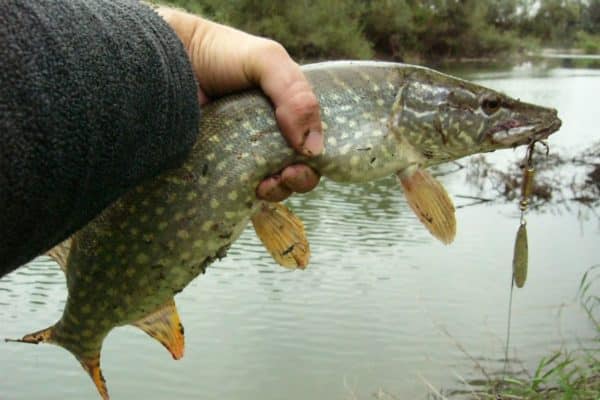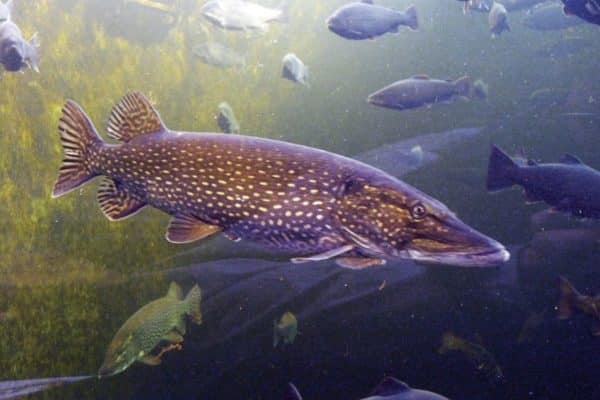Northern pike
About This Species
Northern pike are native to northeast BC and are common throughout Quebec, Ontario, the Prairie provinces, and northern territories. They have been introduced in many regions as stock for sport fishing and are spreading into southern BC.
Northern pike is a predator of smaller fish and is fiercely territorial. Northern pike has been known to deplete prey species from waterways, pushing out local large fish and collapsing food webs. Northern pike are designated as a Regional Containment/Control species by the BC Provincial Priority Invasive Species List.
How to Identify
Northern pike can grow up to 133 cm long, making them the largest invasive freshwater fish in BC. They have a pointed head, a dark back with many small white spots, and a silver belly. Their dorsal fin starts far down the back, almost in line with the anal fin.
Take Action
Prevention is the best approach.
-
If you need advice about invasive species on your property or you are concerned about reported invasives in your local area, contact your local government or regional invasive species organization.
PREVENTION TIPS
It is illegal to move fish between waterways in BC. The use of live finfish as bait is strictly prohibited in BC.

Don't Let It Loose
Learn about best practices
Invasive species are plants, animals or other organisms that are not native to BC, and have serious impacts on our environment, economy and society. Never release your plants and animals into the wild or dump aquariums or water garden debris into rivers, streams, lakes or storm sewers!

Clean, Drain, Dry
Learn about best practices
The Clean Drain Dry program empowers you to help reduce the spread of invasive plants and organisms to BC waters by following the clean, drain, dry procedure on all watercraft and equipment.
REPORT TO PROTECT BC’S BIODIVERSITY

Use the app
Observe and report to protect BC’s biodiversity

Report through this website
Use our form to tell us what you’re seeing and where.





